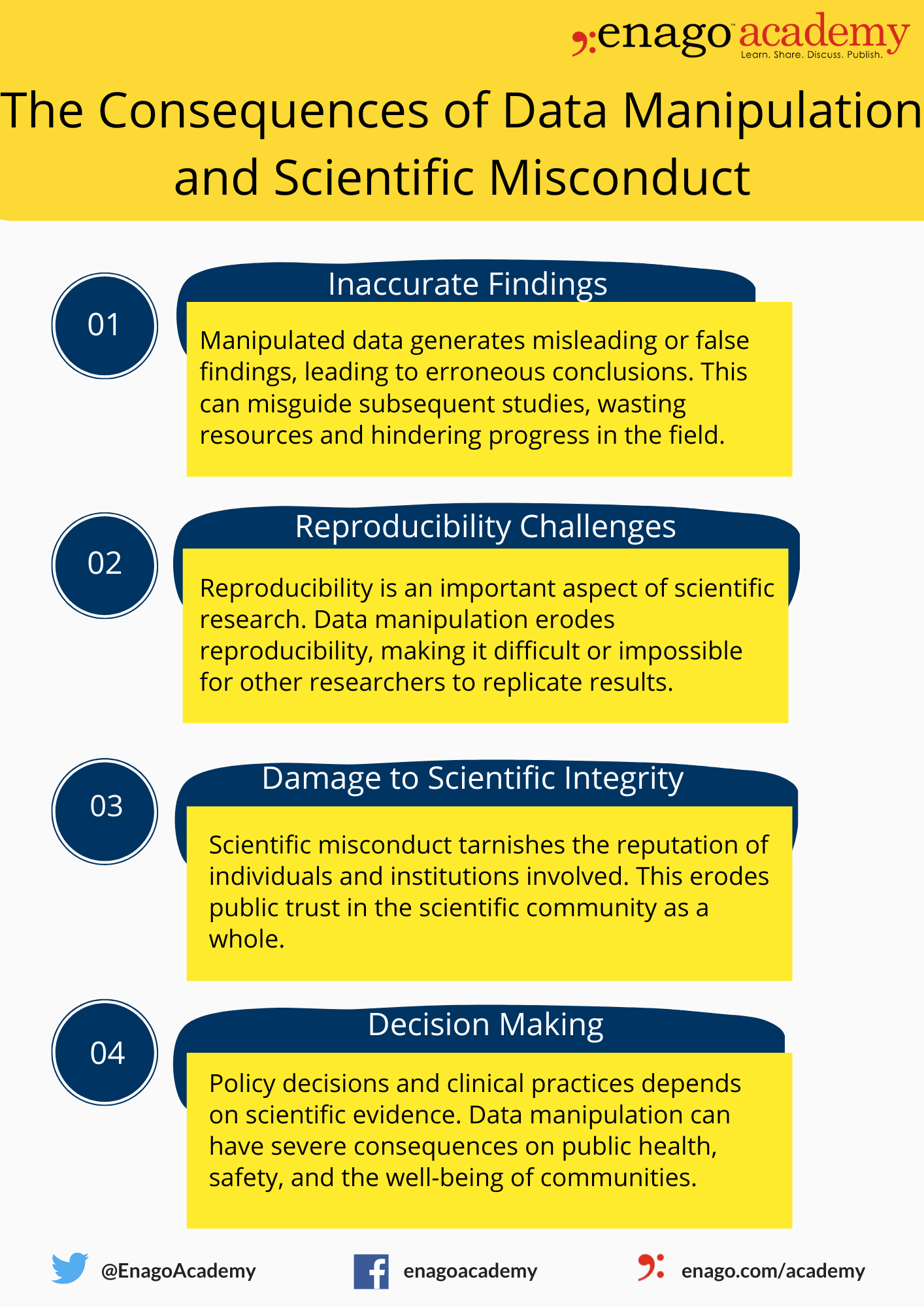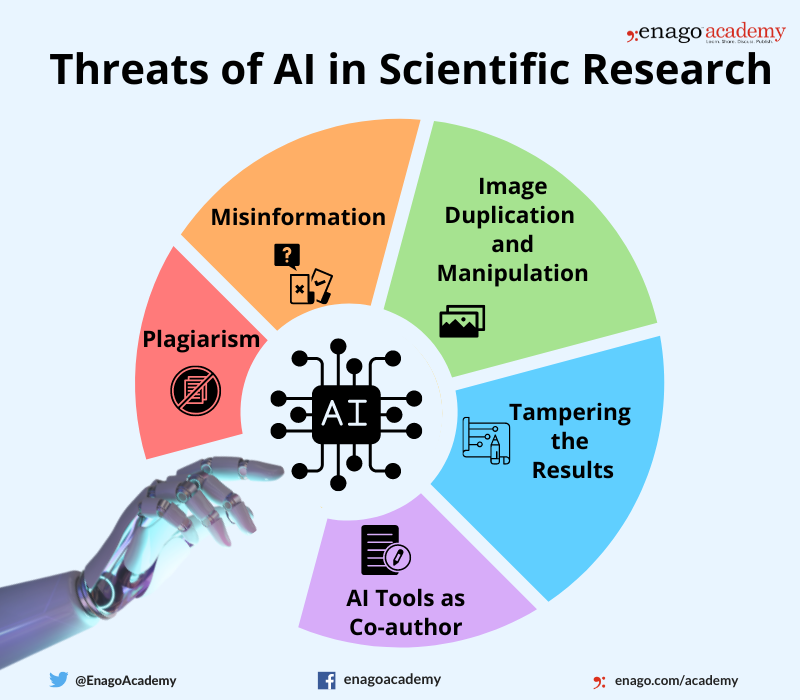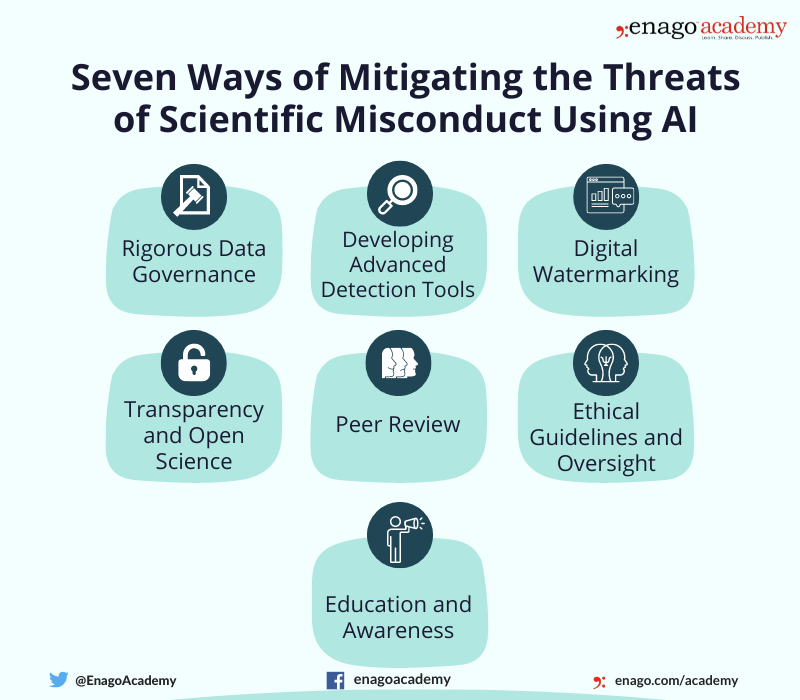Increasing Threat of Scientific Misconduct and Data Manipulation With AI

The advent of artificial intelligence (AI) has revolutionized various fields, including scientific research. From data analysis to predictive modelling, AI has contributed to the field of research in various ways. However, the reliance on AI systems introduce vulnerabilities which are susceptible for exploitation. Although AI has the potential to accelerate the pace of scientific discoveries and analyze vast amounts of data, it is associated with the concern of scientific misconduct and data manipulation.
Academic and scientific misconduct is a threat to intellectual integrity, that hinders the progress of further research. Be it the infamous Duke University cancer research fraud or the stem cell research fraud, the cases halted the career of the researchers involved and barred them from research. Such incidences not only questions the credibility of the community, but also poses to be a great threat to scientific integrity.
Consequences of Data Manipulation and Scientific Misconduct
Data manipulation can lead to serious consequences in research quality and scientific credibility. The consequences of data manipulation and scientific misconduct are as follows:

Threats of AI in Scientific Research
Using AI is accompanied by some hidden risks; which has the potential to damage scientific integrity. Some threats of AI in scientific research are as follows:

1. Plagiarism
AI algorithms are capable of generating texts, including research articles, essays, and scientific reports. Although this automates research, it raises concerns about the misuse of AI-generated content. Furthermore, AI algorithm can generate text that closely mimics human writing styles. This makes it difficult to differentiate between AI-generated content and original work.
2. Misinformation
AI-generated content may disseminate inaccurate or misleading information. Furthermore, the sophisticated content generated by AI makes it difficult to identify the misleading information. Also, with the risk of wrong references, it would be difficult to trace the source of the information and verify its authenticity.
3. Image Duplication and Manipulation
AI algorithms focused on image generation can create realistic and convincing images that are indistinguishable from the original one. Additionally, the accessibility of AI tools and software allow individuals with even a basic technical background to engage in manipulation.
Are you are a researcher, clueless about stipulated guidelines for image processing? Check out this insightful webinar on “How to Avoid Fraudulent Image Manipulation” for FREE to gain insights on avoiding data manipulation and preserving integrity.
4. Tampering the Results
Result tampering can compromise research integrity and hinder the reproducibility of the findings thereby blocking scientific progress. Moreover, the sophisticated nature of the AI algorithms can make it challenging to identify the subtle alterations in the results; thereby making it difficult to discern between genuine outcomes and tampered ones.
5. AI Tools as a Co-author
The involvement of AI in scientific publications raises concerns about the potential threat it poses to research integrity. While AI co-authorship offers benefits such as increased efficiency and productivity, it raises questions on the ownership and results in ethical, legal, and intellectual property challenges.
AI poses a significant threat to research quality and scientific integrity. Safeguarding the credibility of scientific research is necessary to protect the intellectual integrity. While AI holds tremendous potential to advance scientific research, it is imperative to recognize and address the increasing threats of scientific misconduct and data manipulation.
Seven Ways of Mitigating the Threats of Scientific Misconduct Using AI
By adopting responsible AI practices, promoting transparency, enforcing ethical guidelines, and fostering education and awareness, we can mitigate the risks associated with AI’s integration into the scientific community.

1. Rigorous Data Governance
Institutions and researchers must establish robust protocols for data collection, storage, and access. Also, researchers should adhere to rigorous data collection practices and ensure a proper documentation of the same. Transparency in data collection methods allows scrutiny and enhances the reliability and credibility of research. Therefore, strict data governance frameworks, including data auditing and verification must be implemented which can help maintain the integrity of research data.
2. Developing Advanced Detection Tools
Detection algorithms can help to detect plagiarism. Therefore, technologists must continually enhance plagiarism detection algorithms by training machine learning models on diverse datasets that encompass AI-generated text; thus, enabling them to recognize patterns and anomalies associated with AI-generated content.
3. Digital Watermarking
Implementing digital watermarking techniques and embedding metadata in the images can increase their traceability and decrease their visual realism. Also, technologies to verify the originality of images can decrease the image duplication and manipulation issues.
4. Transparency and Open Science
Emphasizing open science practices, such as sharing research data, methodologies, and code, promotes transparency. Also, this can foster collaboration which facilitates a better peer-reviewing. Furthermore, making research data openly available can also enable independent verification to detect any potential instances of data manipulation.
5. Peer review
Peer review can play a critical role in evaluating the quality and integrity of research. Furthermore, independent replication of studies by other researchers can help in identifying the potential data manipulation, this can strengthen the robustness of research findings and reduces the likelihood of data manipulation going unnoticed.
6. Ethical Guidelines and Oversight
The scientific community should develop and enforce ethical guidelines specifically tailored to AI applications. Moreover, ethical review boards and oversight committees can play a crucial role in evaluating the ethical implications of AI research projects and ensuring compliance.
7. Education and Awareness
Researchers, students, and professionals must be educated about the risks of scientific misconduct and data manipulation with AI. Also, creating an environment that prioritizes research integrity will foster a culture where data manipulation is unacceptable. They must be apprised of the consequences of unethical behavior. Thus, encouraging open discussions, promoting ethical behavior, and providing support for researchers to address challenges can help in educating the upcoming researchers.
It is a collective responsibility of researchers, institutions, and the scientific community to uphold the highest standards of research integrity and combat data manipulation effectively. Also, encouraging collaboration between AI systems and human researchers by striking a balance between accuracy and human intellect can add value in research. Researchers can use AI tools for improvising their text and interpreting the data. Human oversight and critical evaluation of AI-generated contributions are essential to ensure the validity of research outcomes; without compromising scientific ethics and conduct.
Have you ever used AI tools in your research? How far do you think AI compromised the integrity in your research? Let us know your views in the form of a thought piece or an article on Enago Academy Open Platform or comment about it below.
Frequently Asked Questions
Data manipulation in research is changing the data or tampering the results for the ease of interpretation or to meet the hypothesis.
AI is partly a threat to academic integrity. AI tools can facilitate plagiarism and may introduce bias. Using AI tools in research is also accompanied by issues such as misinformation and can duplicate the images; thereby rising piracy concerns.









